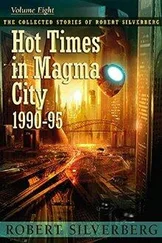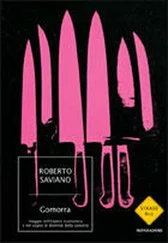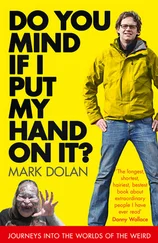Roberto Saviano - Gomorrah - A Personal Journey into the Violent International Empire of Naples’ Organized Crime System
Здесь есть возможность читать онлайн «Roberto Saviano - Gomorrah - A Personal Journey into the Violent International Empire of Naples’ Organized Crime System» весь текст электронной книги совершенно бесплатно (целиком полную версию без сокращений). В некоторых случаях можно слушать аудио, скачать через торрент в формате fb2 и присутствует краткое содержание. Жанр: Старинная литература, на английском языке. Описание произведения, (предисловие) а так же отзывы посетителей доступны на портале библиотеки ЛибКат.
- Название:Gomorrah: A Personal Journey into the Violent International Empire of Naples’ Organized Crime System
- Автор:
- Жанр:
- Год:неизвестен
- ISBN:нет данных
- Рейтинг книги:5 / 5. Голосов: 1
-
Избранное:Добавить в избранное
- Отзывы:
-
Ваша оценка:
- 100
- 1
- 2
- 3
- 4
- 5
Gomorrah: A Personal Journey into the Violent International Empire of Naples’ Organized Crime System: краткое содержание, описание и аннотация
Предлагаем к чтению аннотацию, описание, краткое содержание или предисловие (зависит от того, что написал сам автор книги «Gomorrah: A Personal Journey into the Violent International Empire of Naples’ Organized Crime System»). Если вы не нашли необходимую информацию о книге — напишите в комментариях, мы постараемся отыскать её.
Gomorrah: A Personal Journey into the Violent International Empire of Naples’ Organized Crime System — читать онлайн бесплатно полную книгу (весь текст) целиком
Ниже представлен текст книги, разбитый по страницам. Система сохранения места последней прочитанной страницы, позволяет с удобством читать онлайн бесплатно книгу «Gomorrah: A Personal Journey into the Violent International Empire of Naples’ Organized Crime System», без необходимости каждый раз заново искать на чём Вы остановились. Поставьте закладку, и сможете в любой момент перейти на страницу, на которой закончили чтение.
Интервал:
Закладка:
Anwar el-Sadat was killed by an AK-47 in 1981, General Carlo Alberto Dalla Chiesa in 1982, and Nicolae Ceausescu in 1989. Salvador Allende was found in the Palacio de La Moneda with AK-47 bullets in his body. And these excellent cadavers are the weapon’s historic PR headliners. The AK-47 has even found its way onto the flag of Mozambique and the symbols of hundreds of political groups, from Al Fatah in Palestine to the MRTA in Peru. When Osama bin Laden appears in a video, the AK-47 is his one and only menacing symbol. It has been the prop for every role: liberator, oppressor, soldier, terrorist, robber, and the special forces who guard presidents. Kalashnikov’s highly efficient weapon has evolved over the years: eighteen variants and twenty-two new models, all from the original design. It is the true symbol of free enterprise. The absolute icon. It can become the emblem of anything: it doesn’t matter who you are, what you think, where you come from, what your religion is, who you’re for, or what you’re against, as long as you do what you do using our product. Fifty million dollars will buy about two hundred thousand weapons. In other words, with $50 million, you can create a small army. Anything that destroys political bonds and mediation, that allows for enormous consumption and exponential power, is a winner on the market, and with his invention Mikhail Kalashnikov allowed every power and micropower group a military instrument. After the invention of the AK-47, no one can say they were defeated because they didn’t have access to arms. He leveled the battlefield: arms for everyone, massacres for all. War is no longer the exclusive domain of armies. The AK-47 did on an international scale what the Secondigliano clans did locally by fully liberalizing cocaine and allowing anyone to become a drug trafficker, user, or pusher, thus freeing the market from pure criminal and hierarchical mediation. In the same way, the AK-47 allowed everyone to become soldiers, even young boys and skinny little girls, and transformed people who wouldn’t be able to herd a dozen sheep into army generals. Buy submachine guns, shoot, destroy people and things, and go back and buy some more. The rest is just details. In every photo Kalashnikov’s face, with its angular, Slavic forehead and Mongolian eyes that shrink into tiny slits as he ages, is serene. He sleeps the sleep of the righteous. He goes to bed tranquil if not happy, his slippers tucked neatly under his bed. Even when he is serious, his lips are pulled up like those of Leonard “Gomer Pyle” Lawrence in Full Metal Jacket. Kalashnikov smiles with his lips, but not with his face.
Whenever I see Mikhail Kalashnikov’s portrait, I am reminded of Alfred Nobel, famous for the prize that bears his name, but also the father of dynamite. The pictures of Nobel taken after his invention—after he realized the use that his mix of nitroglycerin and clay would be put to—show a man devastated by anxiety, his fingers tormenting his beard. Maybe it’s just my imagination, but when I look at Nobel, with his arched eyebrows and lost eyes, he seems to be saying just one thing: “I didn’t mean to. I intended to move mountains, crumble rocks, and create tunnels. I didn’t want everything else that happened.” Kalashnikov, on the other hand, always looks at peace, like an old Russian retiree, his head full of memories. You can imagine him, the trace of vodka on his breath as he tells you about some friend of his from the war, or whispering as you eat that when he was young, he could make love for hours on end. And in my childish imagination, Mikhail Kalashnikov’s picture seems to say, “Everything’s fine, it’s not my problem, all I did was invent an assault rifle. It’s no concern of mine how other people use it.” A responsibility that doesn’t go beyond your own skin, and is circumscribed by your actions. Your conscience applies only to the work of your own hands. I think this is one of the elements that makes the old general an involuntary icon of clans around the world. Mikhail Kalashnikov is not an arms trafficker, carries no weight in arms deals, has no political influence, and lacks a charismatic personality, yet he embodies the daily imperative of the man of the market: he does what he has to do to win, and the rest is none of his concern.
Mariano had on a hooded sweatshirt and a knapsack, with KALASHNIKOV on both. The general had diversified his investments and was becoming a talented businessman. No one’s name was better known, so a German businessman launched the Kalashnikov label. The general had taken a liking to distributing his name, even investing in a company that made fire extinguishers. In the middle of his story Mariano stopped the film and ran out to his car, took a small military suitcase from the trunk, and came back and placed it on the bar. I was afraid he had gone completely crazy with machine-gun mystique and had driven across Europe with an AK-47 in his trunk, which he was about to unveil in front of everyone. Instead he held up a tiny crystal Kalashnikov full of vodka, the cork fitted into the end of the barrel. Very kitsch. And after his trip, every bar Mariano supplied in the Aversa Marshes sold Kalashnikov vodka. I was already imagining the crystal reproduction sitting on a shelf behind every barkeeper from Teverola to Mondragone. The video was almost over, and my eyes hurt from squinting—an attempt to correct my nearsightedness. But the final image was truly not to be missed. Two elderly people in slippers standing on their doorstep, still chewing on the last bite of mozzarella, are waving to their young guest. A group of kids had formed around Mariano and me, and they were staring at him as if he were one of the chosen ones, a sort of hero for having met him. Someone who had met Mikhail Kalashnikov. Mariano gave me a look of false complicity, something that had never existed between us. He removed the rubber band from the pack of photographs and flipped through them. After glancing at dozens, he handed me one.
“This is for you. And don’t say I never think of you.”
On the portrait of the old general was written in black felt-tip pen: “To Roberto Saviano with Best Regards M. Kalashnikov.”
International research institutes in economics are in constant need of data, which they serve like daily bread to newspapers, magazines, and political parties. For example, the celebrated “Big Mac” index estimates the prosperity of a country based on the cost of a McDonald’s hamburger. To calculate the state of human rights, the analysts consider the price of an AK-47. The less it costs, the more human rights violations there are, an indication that civil rights are gangrening and the social structure is falling to pieces. In western Africa, an AK-47 can cost as little as $50. And in Yemen it is possible to find second-or thirdhand weapons for as low as six dollars. The best resource for arms traffickers are the Caserta and Naples clans, who, together with the Calabrian Mafia, with whom they are in constant contact, have their paws on the arms deposits of crumbling, Eastern European socialist countries.
The Camorra, in handling a large slice of the international arms market, could actually set the price of AK-47s, thus becoming the indirect arbiter of the state of human rights in the West. As if the level of human rights were slowly declining, draining drop by drop as with a catheter. In the 1980s, while French and American criminal groups were using the M16, the Marine-issue assault rifle designed by Eugene Stoner—a bulky, heavy weapon that has to be oiled and cleaned to keep from jamming—AK-47s were already making the rounds in Sicily and Campania, from Cinisi to Casal di Principe. In 2003, Raffaele Spinello, a pentito of the Genovese clan, which ruled Avellino and the surrounding area, revealed the connection between the Basque ETA and the Camorra. The Genovese clan is allied with the Cavas in Quindici and the Caserta families. It’s not a top-level clan, yet it supplied weapons to one of the principal European militant organizations. The ETA had explored various options for arms procurement during its thirty-year struggle, but the Campania clans became their privileged interlocutors. According to 2003 investigations by the Naples attorney’s office, José Miguel Arreta and Gracia Morillo Torres, two etarras or ETA militants, spent ten days negotiating in a hotel suite in Milan. Prices, routes, swaps. They reached an agreement: cocaine for arms. The ETA promised to steadily lower the market price of cocaine obtained through its contacts with Colombian guerrilla groups, and cover the cost and responsibility of getting the drug to Italy—anything to keep its connections with the Campania cartels, who were probably the only ones able to supply them with entire arsenals. But the ETA didn’t want just AK-47s. They also requested heavy weapons, powerful explosives, and above all, missile launchers.
Читать дальшеИнтервал:
Закладка:
Похожие книги на «Gomorrah: A Personal Journey into the Violent International Empire of Naples’ Organized Crime System»
Представляем Вашему вниманию похожие книги на «Gomorrah: A Personal Journey into the Violent International Empire of Naples’ Organized Crime System» списком для выбора. Мы отобрали схожую по названию и смыслу литературу в надежде предоставить читателям больше вариантов отыскать новые, интересные, ещё непрочитанные произведения.
Обсуждение, отзывы о книге «Gomorrah: A Personal Journey into the Violent International Empire of Naples’ Organized Crime System» и просто собственные мнения читателей. Оставьте ваши комментарии, напишите, что Вы думаете о произведении, его смысле или главных героях. Укажите что конкретно понравилось, а что нет, и почему Вы так считаете.












